|
Space Weather = New Energy
“The Key to Space Weather is the transformation of energy,
a transformation from magnetic energy and intense heat
on the Sun to plasma energy in interplanetary space
to magnetic and electrical energy around the Earth.”
Carlowicz & Lopez, Storms from the Sun
Space Weather will increasing change our modern way of life on Earth. Here is a selection of information sources that explain the impact now.
The Emergence of Space Weather
|
Due to changes in the cosmic environment, space weather is a new concept addressing the electromagnetic and charged particle environments of the Earth and their effects on space-borne and ground-based technological systems. From the ESA sponsored report Space Weather and Interactions with Spacecraft the introduction states:
The plasma environment, especially energetic electrons in the upper atmosphere and in the magnetosphere surrounding the Earth form a hazardous environment to man-made Earth-orbiting satellites. As more and more everyday functions rely on satellite operations, knowledge of the plasma and energetic particle effects on technological systems, including reliable modelling and forecasting methods, has become increasingly important. This has led to a number of initiatives world-wide toward more coherent and goal oriented programmes often referred to as Space Weather programmes.
Source: H. Koskinen, L. Eliasson, B. Holback, L. Andersso n, A. Eriksson, A. Malkki, O. Nordberg, T.Pulkkinen, A.Viljanen, J.-E. Wahlund, and J.-G. Wu, Space weather and interactions with spacecraft, SPEE final report, Finnish Meteorological Institute, Reports, 4, 1999.
Space weather events change the Earth's plasma environment on time scales varying from minutes to days and weeks and as such, space weather has many similarities with atmospheric weather. However, there are important differences between the atmospheric and space weather systems:
1) Many meteorological processes are localised and with modern technology it is possible to make fairly accurate short-term weather forecasts for limited areas. In comparison, space weather is always on the planetary scale. The most important and most dramatic space weather originating from the Sun disturbs the Earth's plasma environment, the magnetosphere and generates global geomagnetic disturbances on Earth.
2) Space weather events occur over a wide range of time scales: the entire magnetosphere
responds to the solar storms within only a few minutes, global reconfiguration takes a few tens of minutes, and sometimes extreme conditions may remain for much longer periods. The fastest signal in the global magnetospheric system is associated to the so-called Storm Sudden Commencement (SSC) as ground-based magnetometers react immediately to a significant change in the magnetopause (magnetosphere boundary) current system when a strong solar wind disturbance hits the magnetosphere. At the slowest end the enhanced fluxes of energetic particles in the radiation belts decay in time scales of days, months, or even years.
On March 13, 1989, a large impulse in the Earth's magnetic field erupted along the US/Canada border which caused the Hydro Quebec power grid to collapse in an elapse time of 90 seconds. The magnetic field disturbances observed at the ground during a geomagnetic storm are caused by large electrical currents (electrojet currents) located in the ionosphere at 100 km altitude that interact with the Earth's magnetic field. The electrojet currents act much like the high altitude wind patterns associated with the jet stream that transport and shape the ordinary or terrestrial weather patterns. Due to space weather, the speed and the size of these patterns can develop extremely quickly and on a planetary scale.
| |
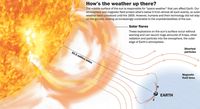
How's the weather up there? Click image for large annotated diagram. Credit: NASA. Bonnie Berkowitz And Alberto Cuadra / The Washington Post.
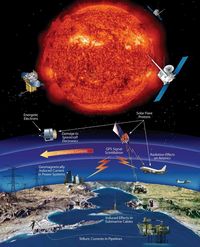
Technological Infrastructure Affected by Space Weather Events
Click image for large annotated diagram
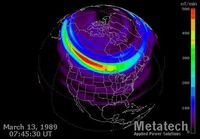
March 13, 1989, Magnetic Field Disturbance
Click image for more details. Credit: Metatech Corporation
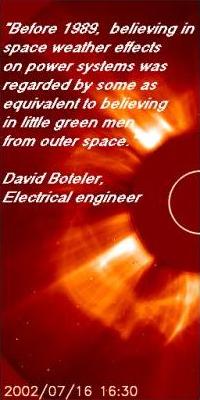
|
NASA: Space Weather Facts
|
Here are some NASA Space Weather facts:
-
The fastest coronal mass ejection was recorded on August 4, 1972 and traveled from the sun to earth in 14.6 hours - a speed of nearly 10 million kilometers per hour!
-
On April 8, 1947, the largest sunspot in modern history reached its maximum size of over 330 times Earth's area.
-
The most powerful solar flare in the last 500 years occurred on September 2, 1859 and was sighted by two astronomers who happened to be looking at the sun at exactly the right time!
-
Between May 10-12, 1999, the solar wind nearly vanished, causing Earth's magnetosphere to expand in volume by over 100 times!
-
A typical CME can be millions of kilometers in size, but have the mass of only a small mountain!
-
The most powerful aurora can generate over 1 trillion watts of power.
-
The March 13, 1989 Quebec blackout, the result of a major geomagnetic storm, caused a $6 billion loss to the Canadian economy.
-
Over $2 billion in satellite technology was damaged or destroyed during the last sunspot cycle.
-
A major solar 'superstorm' such as the one in 1859 could cost $30 billion a day to the US electrical power grid, and up to $70 billion to the satellite industry.
-
During a severe solar storm, Earth loses about 100 tons of its atmosphere into space.
-
Most magnetic storms on Earth happen during the Equinoxes in March and September
Source: NASA Earth Observatory
|
Space weather impacts everyday life
|
Today it is widely recognised that space weather impacts everyday life to the extent that it has become a national security issue. World governments have already started to include space weather in their disaster planning alongside things such as global pandemics and volcanic eruptions. Besides that, electric power grids, aviation, communications, global positioning system (GPS) applications, and satellite operations — technology we have come to rely on for our day-to-day activities are all under threat. Extreme space weather storms are rare, but these low frequency events have significant consequences.
In 2009, the US National Academy of Sciences released a paper that outlined the impact of an extreme Space Weather event. National and international experts from industry, government and academia participated in this study. It describes how extreme solar eruptions could have severe consequences for communications, power grids and other technology on Earth and the potential damage from significant space weather during the next 20 years.
The following article NASA-Funded Study Reveals Hazards of Severe Space Weather provides a brief introduction.
The full report Severe Space Weather Events--Understanding Societal and Economic Impacts (.pdf summary) can be downloaded here)
A major space weather event in the approaching solar maximum could cause widespread disruption for unprepared businesses. Lloyd's is the world's leading insurance market providing specialist insurance services to businesses in over 200 countries and territories. Lloyd's 360° Risk Insight Space weather: it's impact on Earth and implications for busines, November 2010, produced by Lloyd's and RAL Space, aims to increase awareness of space weather as a global risk. The introduction states:
The risks posed by space weather are now magnified
through what some commentators have called
“creeping dependency”, which means the growth
of interconnected systems that business and other
activities rely on. Modern businesses are rarely
self-contained. They often rely on other businesses to
supply both raw materials and a wide range of services;
for example, energy supply and distribution services
(see Figure 8). This leads to increasingly interconnected
and interdependent systems. Therefore a space
weather event could have wider regional and even
global impacts: by triggering cascading failures across
systems. A key example of this dependency is our
reliance on secure electric power. Space weather can
(and has) caused signifi cant disruption to supplies on
regional scales and could affect national systems over
extended periods of time.
Source: Lloyd's 360° Risk Insight Space weather: it's impact on Earth and implications for busines, November 2010 (.pdf format), link.
Recent reports suggest the greatest natural disaster perhaps facing any nation would be an intense geomagnetic storm knocking out too many transformers and thus disabling a national power grid. Yet, it is a mistake to believe that a powerful blast of space weather is the only concern. The solar cycle is an oscillation between two extreme states, each with their own distinct conditions and hazards, rather than a simple change between periods of high and low activity. Consequently, besides satellites being vulnerable there are other space weather related impacts that affect our everyday lives.
|
|
Severe Space Weather Events—Understanding Societal and Economic Impacts Workshop Report Besides technical information, an estimate was provided on the costs of space weather-induced outages. An estimate of $1 trillion to $2 trillion during the first year alone was given for the societal and economic costs of a “severe geomagnetic storm scenario” with recovery times of 4 to 10 years. Click image for the executive report.
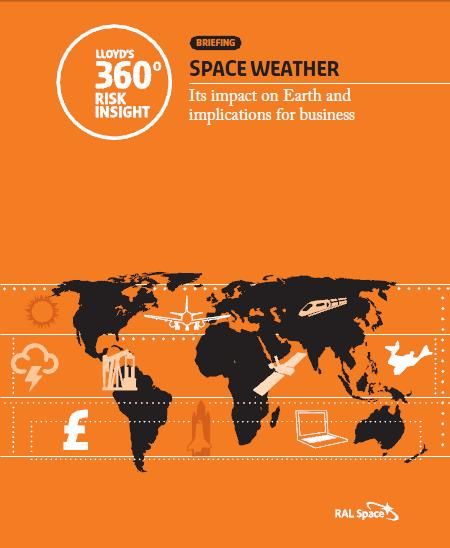 Lloyd's, 360° Space Weather Rport
Lloyd's, 360° Space Weather Rport, (November, 2010)
Click report cover image for executive summary
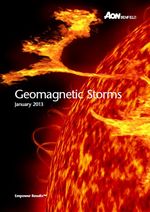 For more reports click image for the News of the Imbalance Best of the Blog - Space Weather News & Reports.
|
Space Weather and Aviation
|
In February, 2013, the UK Royal Academy of Engineering produced a 70-page space weather report titled, Extreme space weather: impacts on engineered systems and infrastructure,. Amongst the details of technologies affected by space weather and how this can be mitigated, there is also a short section on aircraft passenger and crew safety. The analysis focused on how much radiation passengers are being exposed to on high altitude flights, even during normal non geomagnetic storming days. The executive summary states:
Aircraft passenger and crew safety
Passengers and crew airborne at the time of an extreme event
would be exposed to an additional dose of radiation estimated to
be up to 20 mSv, which is significantly in excess of the 1 mSv annual
limit for members of the public from a planned exposure and about
three times as high as the dose received from a CT scan of the
chest. Such levels imply an increased cancer risk of 1 in 1,000
for each person exposed, although this must be considered
in the context of the lifetime risk of cancer, which is about 30%.
No practical method of forecast is likely in the short term since
the high energy particles of greatest concern arrive at close to the
speed of light. Mitigation and post event analysis is needed through
better onboard aircraft monitoring. An event of this type would
generate considerable public concern.
Source: Extreme space weather: impacts on engineered systems and infrastructure (Feb, 2013), Royal Academy of Engineering, (.pdf) here
It's not just more radiation to be concerned about, due to climate change models that predict that the jet stream is being accelerated, which is having a destabilising effect, more air turbulence is likely to be come more of an issue in the next 40 years. See article, Flights to get bumpier as turbulence to double.
|
|
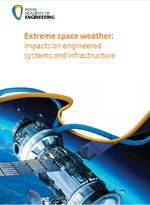
Extreme space weather: impacts on engineered systems and infrastructure
Click for summary report only

Integrating Space Weather Observations & Forecasts into Aviation Operations (March 2007), American Meteorological Society. Click image for this report.
|
Space Weather and National Power Grids
|
Intense magnetic field variations in the magnetosphere induce electric fields and currents over large areas of Earth's surface. In turn, this geoelectric field creates what are known as geomagnetically induced currents, or GICs, which flow in any available conductor, including high-voltage transmission lines, oil and gas pipelines, railways, and undersea communications cables.
The biggest area of concern is the vulnerability of national power grids and many articles and reports have been written and are available to read via the internet. John Kappenman, who worked in the power industry for 20 years, then for Metatech Corporation, a scientific and engineering consulting firm, and is now an independent consultant has campaigned since the 1989 Quebec Hydro incident that humanity cannot afford to avoid the risk of losing complete national power grids. In making a comparison with a major hurricane, Kappenman says. “We are talking about something that could sweep across the entire continent, not a few counties near landfall,” he says. Some engineers believe that another Carrington Event would have devastating consequences as all of North America could lose the ability to transmit electricity. Or at the very least, it's possible that such a storm would leave “in excess of 100 million people cut off from electrical power for perhaps weeks, months, extending into years,” Kappenman says. “We are not prepared for dealing with that, and … we really don't want to find these things out firsthand,“ he adds. For the complete article, see American Geophysical Society article The dangers of solar storms: That which gives power can also take it away
NEWS “Maine has become the first state in the nation to pass legislation ordering its grid to be hardened against an electromagnetic pulse, or EMP, event, according to report from Joseph Farah's G2 Bulletin.”
The law not only requires preparation against a natural or man-made EMP, it encourages other states to take a similar initiative, since the federal government has refused to make the potential for an EMP event a priority.
Source: State makes it law to harden grid against EMP, WND Weekly News, 17th June 2013
|
|
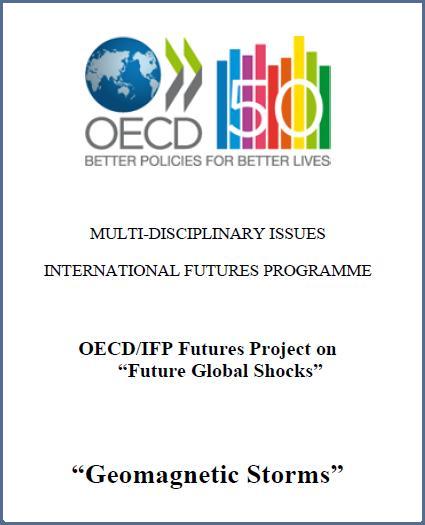
“
While we worry about future threats… the sun's propensity for belching out monstrous solar flares (
like the Carrington event of 1859) could almost instantly create a world without modern conveniences, or even electricity. The sun could literally 'bomb us back to the stone age'.”
Click for article and U.S. Homeland Security OECD report.
News: State makes it law to harden grid against EMP
Click image for story.
|
Space Weather and Geomagnetically Induced Currents
|
As already stated, during intense geomagnetic activity, electric currents can be induced in man-made conductors, on the Earth's surface, especially where the land is resistant. Thus, oil and gas pipelines form an ideal system of long conductors that allow electrical currents to flow more easily. With the accumulative action of many magnetic disturbances, pipeline corrosion is significantly accelerated. The massive oil spillage that took place in Alaska, March 2006 could have been caused by Space Weather. Click on the image of the BP oil pipeline in Alaska to obtain general information on the ground effects of space weather.
In July 2011, there was a significant confession when the UK Guardian newspaper reported Oil and gas spills in North Sea every week, papers reveal The subtitle stated: 'Documents list companies that caused more than 100 potentially lethal — and largely unpublicised — leaks in 2009 and 2010'.
Serious spills of oil and gas from North Sea platforms are occurring at the rate of one a week, undermining oil companies' claims to be doing everything possible to improve the safety of rigs. […]
Documents obtained by the Guardian record leaks voluntarily declared by the oil companies to the safety regulator, the Health and Safety Executive(HSE), in a database set up after the Piper Alpha disaster of 6 July 1988 which killed 167 workers. They reveal for the first time the names of companies that have caused more than 100 potentially lethal and largely unpublicised oil and gas spills in the North Sea in 2009 and 2010.
Source: Oil and gas spills in North Sea every week, papers reveal: Documents list companies that caused more than 100 potentially lethal – and largely unpublicised – leaks in 2009 and 2010, The Guardian, 5th July 2011
Worsening space weather means the maintenance of pipelines needs to be taken much more seriously.
|
|

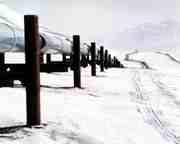 Space Weather & GCICS Space Weather & GCICS Click image for infomation, also link 1 & link 2.

|
Space Weather and Car Electronics
|
For most people the evolutionary aspect of cosmic energy does not interest them, but
cosmic rays interfering with their car electronics is certainly something that would
make them pay attention! Car manufacturers are now having to be concerned with the
increase of cosmic rays and specifically neutrons from space. As one report puts it,
“Neutron-induced firm errors have progressed from being a nuisance to being a significant problem”. Click here for a short article and click the image for a longer indepth technical review of the situation. For more current reports see News of the Imbalance Best of the Blog - Space Weather, Electronics & Electromagnetic Chaos .
|
|

|
Visualising A Solar Storm
|
The Discovery Channel documentary-drama Perfect Disaster: Solar Storm (2006), was the first major effort to depict the factual consequences of a massive Coronal Mass Ejection from the Sun burning out transformers and taking down parts of national power grids in the United States. The drama involved was how authorities would have to make critical decisions on how to deal with this hypothetical scenario. This documentary-drama can be found on the internet and is highly recommended.
Since that time, NASA have produced their own scientific depiction of the drama going on in space. In August 2011, for the first time, a spacecraft far from Earth was turned and used to watch a solar storm engulf our planet. The movie, released during a NASA press conference, galvanized solar physicists, who said it could lead to important advances in space weather forecasting. One scientists is reported to have said:
“The movie sent chills down my spine,” says Craig DeForest of the Southwest Research Institute in Boulder, Colorado. “It shows a CME swelling into an enormous wall of plasma and then washing over the tiny blue speck of Earth where we live. I felt very small.”
Source: Spacecraft Sees Solar Storm Engulf Earth , NASA Science News, 18th August 2011
Find out about the current space weather conditions at the U.S. National Oceanic and Atmospheric Administration Space Weather Prediction Center
Link
The Sun is quiet, but cosmic activity is NOT! It is now Extreme Space Weather! Link
|
|

Perfect Disaster: Solar Storm

Spacecraft Sees Solar Storm Engulf Earth
Click here
 Find out what's going on now!
Click NOAA logo
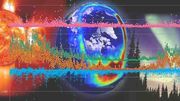
For more info on Extreme Space Weather
Click here
|
Joyfire Tour Back
  Next
|

